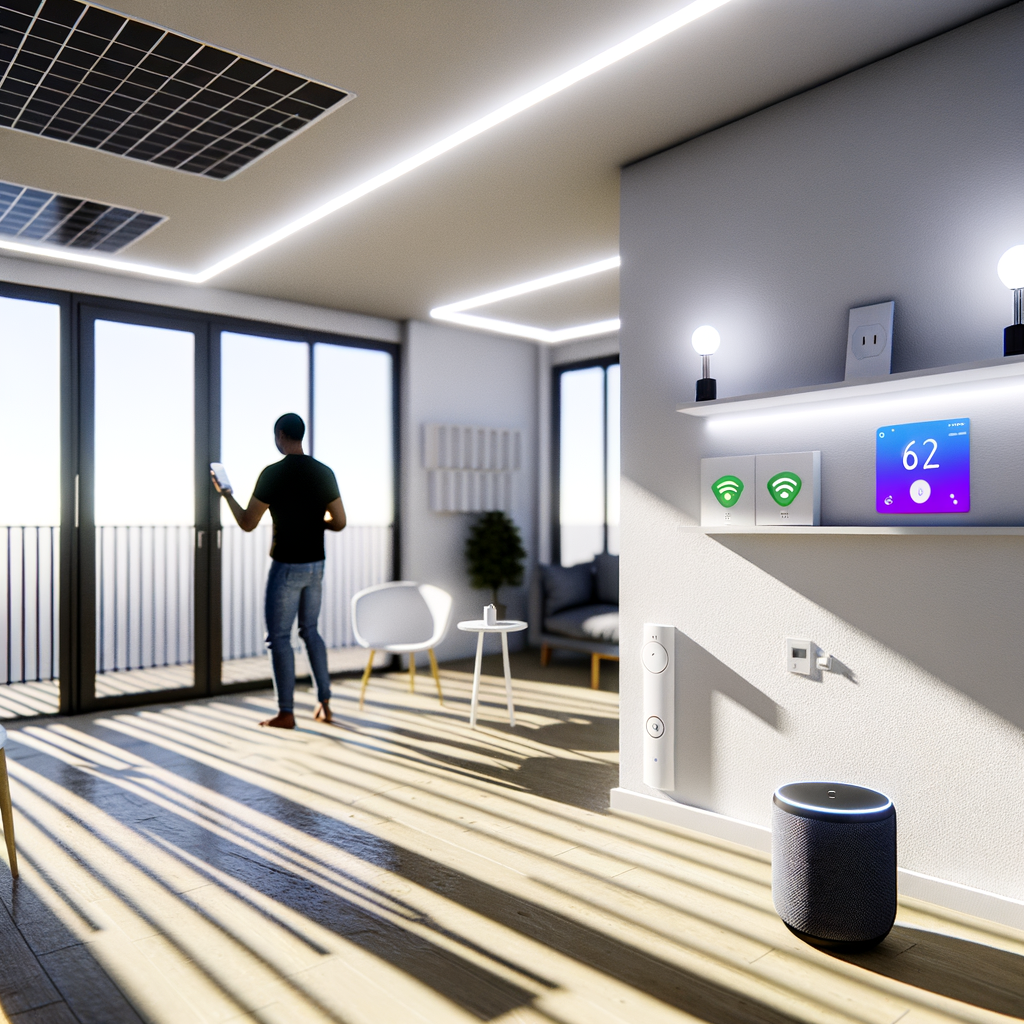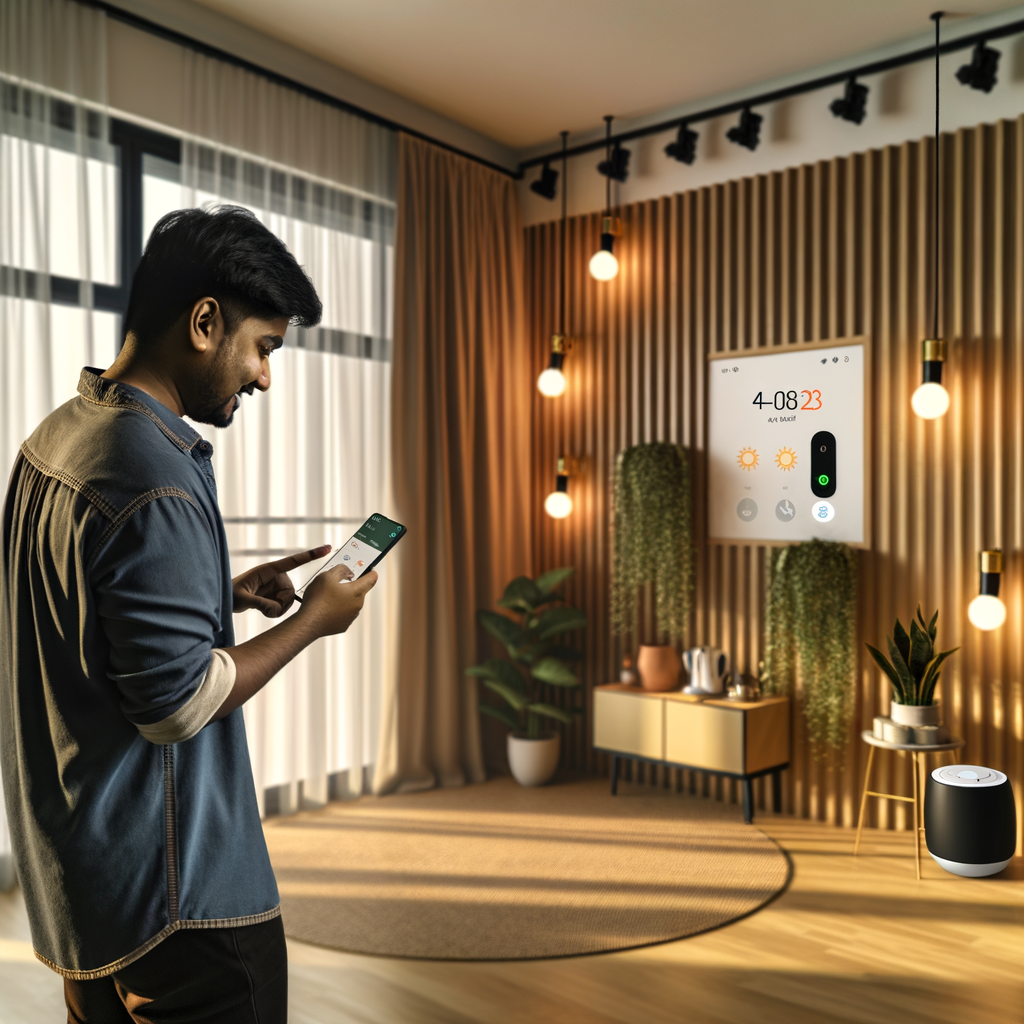Myth-Busting Smart Homes: 7 Common Misconceptions Renters Have About Energy-Efficient Tech
Smart home tech is rapidly changing the way we interact with our apartments, condos, and rental homes. With increased awareness about the environment and energy efficiency, many renters are exploring smart devices to save money, reduce their carbon footprint, and enjoy added convenience.
However, several misconceptions persist—especially among renters—about what’s possible with energy-efficient smart home technology. Let’s clear the air and empower you with the knowledge (and confidence) to make your rental smarter and greener.
1. Myth: “Smart Home Devices Require Permanent Installation”
This is one of the most pervasive myths among renters. Many believe that smart home devices require drilling holes in the wall, rewiring, or making other permanent modifications that violate lease agreements. Luckily, this isn’t usually the case.
What’s Actually True?
- Plug-and-Play Simplicity: Many smart devices—like smart plugs, lamps, and thermostats—are portable and don’t require permanent installation.
- No-Drill Mounts: Many security cameras, sensors, and light switches are designed with adhesive backing or magnetic mounts suitable for rentals.
- Reversible Upgrades: Devices such as smart thermostats often allow you to replace the original unit when you move out, leaving no trace.
Actionable Advice
- Opt for smart plugs and bulbs—just plug or screw them in and set them up with an app.
- Use removable mounting strips for cameras and sensors.
- Keep all original hardware, so you can revert to the original setup when moving out.
2. Myth: “Smart Tech Equals Expensive Tech”
It’s easy to assume that upgrading to a smart, energy-efficient apartment will cost a fortune. With a few high-end products out there, it’s understandable. But you don’t need to blow your budget to go green.
What’s Actually True?
- Affordable Options Exist: Smart LED bulbs, plugs, and basic sensors often start under $20.
- Energy Savings Offset Costs: Scheduling devices or using smart thermostats saves money on your utility bills over time.
- DIY is Cheaper: Most devices are easy to install yourself, saving on professional fees.
Actionable Advice
- Start small—try one or two smart devices and expand as you see benefits.
- Look for ENERGY STAR-certified products or utilities that offer rebates.
- Monitor your energy use and savings using device apps or reports.
3. Myth: “You Need to Own Your Apartment to Use Smart Tech”
Many renters fear that smart home tech is the exclusive territory of homeowners due to potential lease violations or compatibility issues. Fortunately, the reality is much more renter-friendly.
What’s Actually True?
- No Ownership Required: Most smart devices work over Wi-Fi and don’t require changes to your building’s infrastructure.
- Landlords are Often Supportive: Some landlords appreciate energy-saving upgrades and may even reimburse you!
- Easy to Take With You: Most smart gadgets are portable—just uninstall and bring them to your next place.
Actionable Advice
- Choose Wi-Fi–enabled devices that don’t need a neutral wire or permanent wiring changes.
- Talk to your landlord if you want to install a smart thermostat—many are open to upgrades that improve energy efficiency.
- Document installation and keep your lease handy to ensure compliance.
4. Myth: “Smart Devices Are Difficult to Set Up and Use”
Tech phobia is real, and some renters worry that setting up smart gear is more trouble than it’s worth. Thankfully, modern devices are designed with simplicity in mind.
What’s Actually True?
- App-Guided Setup: Most smart products guide you through installation step-by-step via a phone app.
- No Coding or Tech Expertise Needed: If you can use a smartphone, you can install most devices.
- Voice Assistants Help: Devices often integrate with Alexa, Google Assistant, or Siri for hands-free use.
Actionable Advice
- Start with smart bulbs or smart plugs—they’re the easiest to set up.
- Look for devices with lots of positive reviews about setup and usability.
- Check online support forums and manufacturer’s YouTube channels for walk-throughs.
5. Myth: “Smart Tech Isn’t Really More Energy Efficient”
Some skeptics believe that the energy used by smart ‘standby’ devices outweighs their potential savings. However, actual usage data shows smart home tech drives down energy use—when used wisely.
What’s Actually True?
- Smart Thermostats: These devices learn your patterns and adjust heating/cooling to maximize comfort and minimize waste, often saving 10–23% on energy bills.
- Automated Lighting: Smart bulbs and switches can be set to turn off when you leave a room, or follow a schedule to avoid unnecessary use.
- Remote Control: Left something on? Switch it off from anywhere via your phone.
Actionable Advice
- Set up device schedules and automations (like turning lights off at bedtime).
- Use geofencing features to power down when everyone leaves home.
- Review your energy use in device apps and adjust habits accordingly.
6. Myth: “Smart Homes Aren’t Secure or Are Bad for Privacy”
Worries about hacking, spying, or losing privacy due to smart home tech abound—but smart devices can be secured easily, turning your rental into a safer, not riskier, space.
What’s Actually True?
- Modern Security Features: Most devices use encryption and require secure accounts.
- User Controls: You can choose who has access and what data is shared.
- Firmware Updates: Manufacturers regularly add new protections via simple updates.
Actionable Advice
- Change device default passwords and use strong, unique ones.
- Enable two-factor authentication on smart home apps whenever possible.
- Regularly update device firmware and app software.
- Be selective—don’t buy gadgets from unknown brands or off-brand sellers.
7. Myth: “You Need a Super-Fast Internet Connection”
Many renters assume you need blazing-fast Wi-Fi or fiber internet to run a smart home. In reality, the average broadband connection is more than enough for most devices.
What’s Actually True?
- Minimal Bandwidth Needed: Most devices send very small amounts of data to operate.
- No Speed Loss for Browsing: Streaming video is what uses real bandwidth, not smart plugs or light bulbs.
- Offline Options: Many smart products work over Bluetooth or Zigbee, and only require Wi-Fi for setup or remote features.
Actionable Advice
- Prioritize your internet for devices where it matters—like security cameras—and use local automation when possible.
- If your Wi-Fi is spotty, try mesh Wi-Fi or a signal booster for better coverage throughout your rental.
- Split up Wi-Fi for smart home devices using a guest network feature on your router.
Quick Start: Steps for Renters to Bring Smart, Green Tech Into Their Rentals
1. Assess Your Lease and Space
- Look over your lease for restrictions on modifications.
- Take note of light fixtures, outlets, and thermostat types.
2. Choose Portable, Lease-Friendly Devices
- Go for plug-in or adhesive-mount products.




